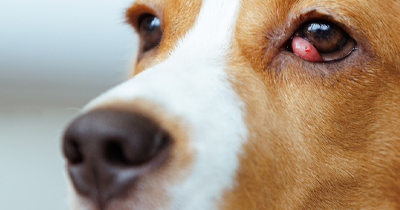Common Myths and Misconceptions About Cherry Eye Debunked
 Dogs that have cherry eyes frequently have an issue that worries pet owners. It’s characterized by the prolapse of the third eyelid gland, resulting in a red, swollen mass resembling a cherry. Despite its prevalence, several myths and misconceptions surrounding cherry eye can lead to confusion and unnecessary worry. In this blog post, we’ll debunk some of the most common myths about cherry eye to provide pet owners with accurate information and peace of mind.
Dogs that have cherry eyes frequently have an issue that worries pet owners. It’s characterized by the prolapse of the third eyelid gland, resulting in a red, swollen mass resembling a cherry. Despite its prevalence, several myths and misconceptions surrounding cherry eye can lead to confusion and unnecessary worry. In this blog post, we’ll debunk some of the most common myths about cherry eye to provide pet owners with accurate information and peace of mind.
Myth #1: Cherry Eye is Painful for Dogs
One of the most widespread myths about cherry eye is that it causes significant discomfort or pain for affected dogs. However, in many cases, cherry eye is not inherently painful. While the condition may irritate or rub due to the protrusion of the gland, it typically does not result in acute pain. Nevertheless, seeking veterinary attention is essential to prevent potential complications and ensure your pet’s comfort.
Myth #2: Cherry Eye Resolves on Its Own
Some pet owners believe that cherry eye will resolve spontaneously without intervention. While it’s true that occasional cases of cherry eye may retract independently, this is relatively rare. In most instances, veterinary treatment is necessary to address the condition adequately. Treatment-related complications like dry eyes, persistent irritation, and secondary infections can become more likely if you put off getting help.
Myth #3: Only Certain Dog Breeds are Prone to Cherry Eye
While certain breeds, such as Bulldogs, Beagles, and Cocker Spaniels, are more predisposed to developing cherry eye, any breed or mixed-breed dog may experience it. Additionally, age, genetics, and individual predisposition can play significant roles in the development of cherry eye. Therefore, all pet owners should know the condition and monitor their dogs for signs or symptoms.
Myth #4: Cherry Eye Can Only Be Treated with Surgery
While surgical intervention is often recommended to address cherry eye permanently, it’s not the only treatment option. In some cases, topical medications or manual gland replacement techniques may effectively resolve the condition without surgery, especially if caught early. However, these conservative approaches may not suit all cases, and surgery remains the most reliable long-term solution.
Myth #5: Cherry Eye is Aesthetic Issue Only
While cherry eye can undoubtedly affect the appearance of a dog’s eye, it’s not solely a cosmetic concern. The prolapse of the third eyelid gland can compromise the eye’s natural lubrication and tear production, leading to dryness, irritation, and potential long-term complications such as keratitis or corneal ulcers. Therefore, prompt veterinary evaluation and appropriate treatment are crucial to safeguard your pet’s ocular health.
Cherry eye is a common but often misunderstood condition in dogs. By debunking these myths and misconceptions, Bloor-Kipling Animal Clinic hopes to empower pet owners with accurate information and encourage proactive management of their dog’s eye health. Consult your veterinarian immediately for a precise diagnosis and treatment if your dog has a cherry eye or any other ocular problem. Early intervention is essential for your furry friend’s well-being to have the best chance of recovery.
